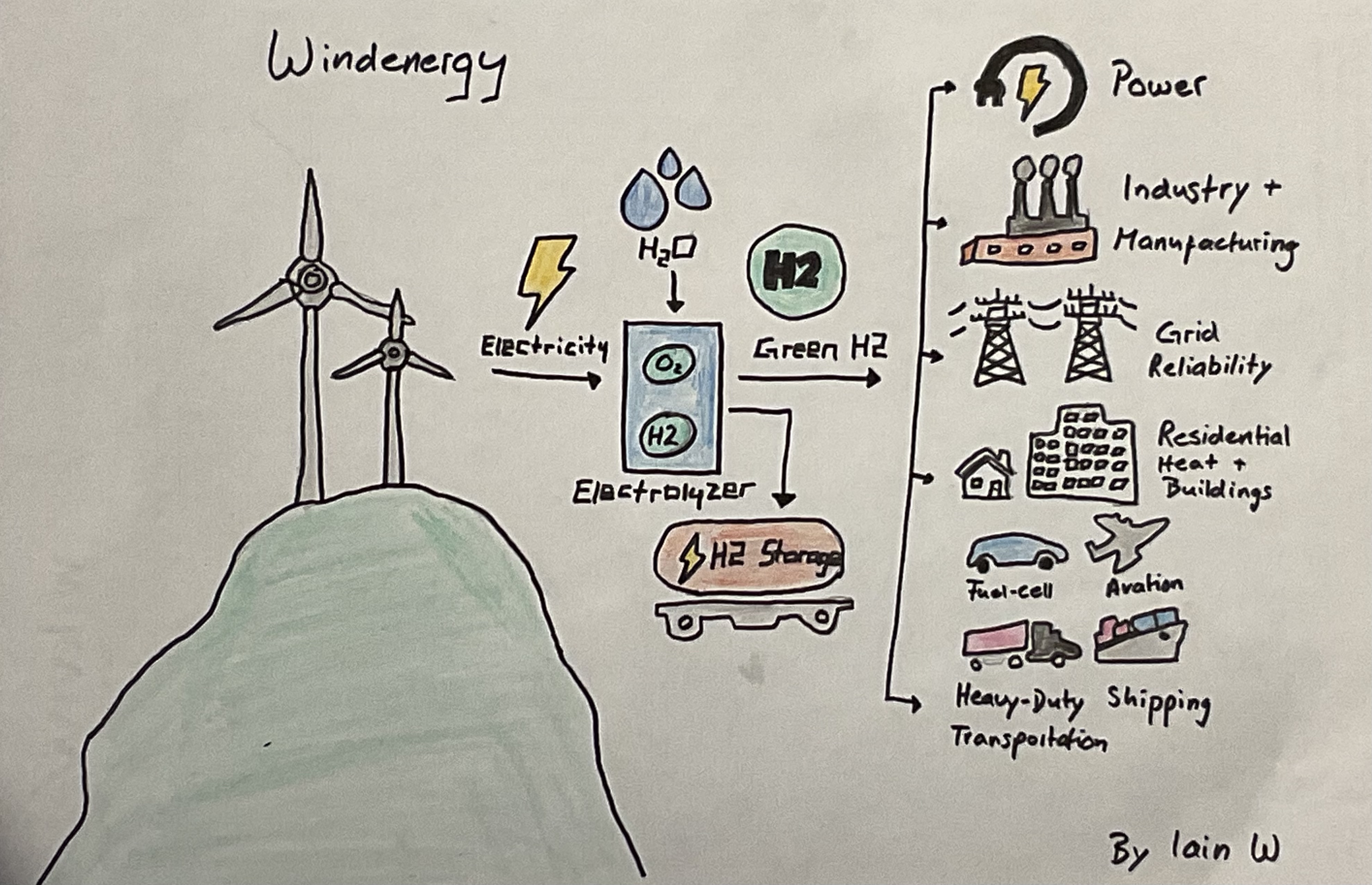Wind Energy
The process of using the wind to generate mechanical power or electricity is known as wind power or wind energy. Wind turbines transform the wind's kinetic energy into mechanical energy. This mechanical energy can be employed for specialized operations (such as grain grinding or water pumping) or transformed into electricity by a generator.

100 years ago
Windmills were used by American colonists to grind grain, pump water, and cut wood at sawmills. Thousands of wind pumps were erected by homesteaders and ranchers when they populated the western United States. Small wind-electric generators (wind turbines) were also popular in the late 1800s and early 1900s.
As rural electrification projects in the 1930s stretched electricity connections to most farms and ranches across the country, the number of wind pumps and turbines decreased. Some ranches, though, continue to employ wind pumps to provide water to their livestock. Small wind turbines are regaining popularity, mostly as a source of electricity in isolated and rural locations.
Today
What makes wind farm power renewable?
Because wind is generated by the sun's heat, it does not become 'used up' after passing through a turbine; instead, it continues to blow around the earth. It is renewable energy since it can be used repeatedly. One of the true benefits of wind energy is this.
The roaring 40s, the predominant westerly winds that round the Earth's high southern latitudes, pass directly across Tasmania, providing a world-class wind energy potential. When these winds reach Tasmania's west coast, they've blown thousands of kilometers across the chilly Southern Ocean since last hitting warm land on South America's tip.
Is wind energy a viable source for meeting electricity needs?
Today, there are many highly successful onshore and offshore wind power projects around the world. Countries around the world currently considered leaders in wind energy include the UK, China, Denmark, Spain, and Portugal.
There are several different statistics that are important when it comes to being a "Wind Energy Leader," such as: B. Total installed capacity or growth and penetration as a percentage of a nation's energy supply. Because of these different policies, it's hard to say that a country or state is a world leader in wind energy. For example, wind energy in Denmark meets 116% of its national electricity generation needs in a single day, with excess power being exported to neighbouring countries.
In 100 years
The renewable energy technology market is growing exponentially, and advancements in wind turbine technology are an important part of this growth. Research shows that wind energy will be the most cost-effective source of electricity in the future. However, with wind power in the UK expected to provide enough power to 2.4 million homes in 2011, the impact of the growth of the wind turbine industry is already being felt. It is estimated that by 2020, this number will increase to 7.7 million households. Project Nova V-turbine Advances in turbine technology have also greatly improved system performance and efficiency and reduced component costs, meaning wind energy is becoming a real competitor to more mature but harmful energy sources such as natural gas and coal.
Scientists are also working to build wind turbines that can continue to generate electricity even in extremely strong winds (currently, during storms, turbines must be shut down to avoid damaging the machinery). Instead, the turbines being developed can operate at very low wind speeds, meaning cities and suburbs may be better suited for wind power.
Summary
Wind Energy was, is and will always be an important energy source that we need to use. It’s fascinating to see how wind energy has improved for 100 years ago. I am very confident that wind energy will be an important renewable energy for us in the future and seeing how many projects are planned and already in the works make me feel optimistic about our future.
In mid-2014, there were about 55 wind turbines in Switzerland; by the end of 2016, there were 57 turbines in 37 locations. At the time, they accounted for only a small fraction of around 0.04% of Switzerland's energy consumption. At the end of 2020, the total installed capacity of wind turbines was 87 MW (2019: 75 MW). Knowing this I am proud to be Swiss and knowing we’re slowly improving our contribution using wind energy.
Contributor:
Iain Weder
PDF-File:
Wind Energy.pdf (403,96 kb)
Sources:
past of wind energy (renewableenergyworld.com)
current wind energy (momentumenergy.com.au)
future projects (www.renewableenergyhub.co.uk)
Pictures Sources:
Drawing of Wind Energy (Drawing by Iain)